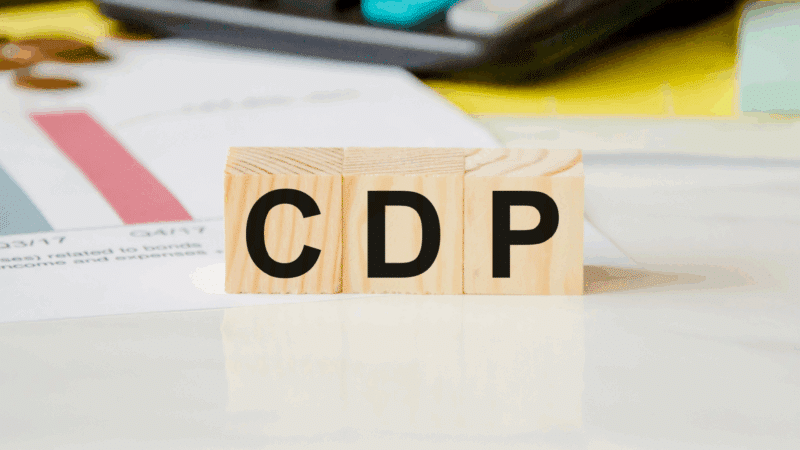
Customer data platforms (CDPs) have an identity crisis. Ten years after they first emerged, CDPs finally got their nod from Gartner — a birthday gift wrapped in validation.
But something’s off. Once the darling of martech, the CDP has gone from must-have to maybe. Between 2020 and 2023, it was gold rush season. Everyone wanted one. Everyone wanted to be one.
“We have {insert a CDP feature} — does that make us a CDP now?” That kind of hopeful stretching was a regular feature in CDP Institute Slack threads.
Now? The category’s splintering, the label is losing meaning and vendors are scrambling for new names.
The rise
CDP revenues passed $5 billion in 2023, with forecasts pointing to a 5.5 times growth over the next five years. Demand was sky-high.
But expectations weren’t just high — they were expansive. Ingestion, transformation and delivery weren’t enough anymore. The expectation was that CDPs would do it all: tag management, ID resolution, personalization, journey orchestration, email, predictive scores, events forwarding — even clean the kitchen sink.
The RFPs ballooned, with 200+ questions driven less by real needs and more by the art of the possible. It wasn’t about what the CDP was needed for but what a CDP could do. Get the bells and whistles now. Figure out the use case later.
And the market jumped. Vendors raced to add features — or at least promise them. Some were already live. Others were penciled in for “a quarter far, far away.” RFP answers began to blur:
“Can you do this?”
- Yes, and here’s our workaround.
- Yes, in a specific way, that sort of delivers what you’re asking.
- Yes, our API lets you build it if you want.
- Yes, we didn’t quite understand the question, but sure.
- Yes, we spent time and budget building this exact thing … that you’ll probably never use.
The result? Feature bloat. One new invention triggered a new requirement, which triggered another invention. A cycle of constant addition, chasing competitive parity, not actual utility.
Dig deeper: 6 challenges businesses face when deploying CDPs
The shakeout
Some platforms showed ingenuity in self-reinvention and innovation — seemingly coming out of nowhere to lead the market by building on existing strengths. They added meaningful features where there was a clear need.
Some leaned technical. Others focused on the end user — making things accessible, making them work. There was enough demand — and enough budget — for both ends of the spectrum. The market carried on growing.
Then, new vendors entered the picture. Pure play. Composable. Slick. Nimble. Performant. Suddenly, everyone wanted in. The market splintered — rapidly.
And when everyone does everything, how do you stand out? You keep on innovating and adding, or you merge and acquire.
It’s a natural cycle for a maturing market — predicted, expected and even welcomed. Stronger competitors, shorter shortlists and some noticeable price drops. Proof that a healthy, competitive landscape can benefit the buyer. And we should actively encourage that.
But then something happened. Consolidation was no longer enough.
The composable
Searches for CDPs have been increasing since roughly 2011. They spiked in 2025. The trouble is that Hightouch came along with its big Series C funding, and composability was the word of the day.
The composable skeptics had a choice to make — quietly sit this one out and carry on pretending like “zero-copy” was not a thing, or embrace the next stage of the journey, develop data warehouse solutions and hail the success of the industry, with Hightouch now set amongst the front runners.
After all, what’s one feature more for a sector that has been adding capabilities since day one? Some brands reacted quickly and got there with relative ease. For others, that fundamental change in architecture proved a step too far — either for technology, ideology, or both. Even then, concessions were made. That last clear differentiator was beginning to fade.
It was all back to being a CDP again, with stronger competitors added in. Seemingly addicted to change, the industry was craving something new.
Dig deeper: Why does composability get so much attention in the CDP space?
The reinvention
In late 2024, people were looking for “angles.” Being a CDP was no longer enough. It was a crowded market, and standing out became increasingly difficult. Moreover, calling yourself a CDP could mean any number of things — everything is a USP, and therefore, nothing is a USP.
Soon enough, marketers got to work on what they do best: write new slogans and search for unique offerings. A fair few decided that if they could create a new category, they could become a leader before anyone else came along.
Enter the post-CDP era, where more vendors describe themselves by what they do, not what they are. Many are trying to invent a niche they can stand out in or be the only choice for.
Admittedly, they have a point — buying a platform to do something has infinitely more meaning than buying a three-letter acronym. That is at least true when it comes to a CDP. It implies you planned your use cases. You have collated your requirements. You know what you are after and why.
You need real time. Unification. Cleansing. Performance. Experience. Growth. Good thing you never need them all at once, do you?
Dig deeper: 5 principles for a smoother, more successful CDP deployment
The winners
And if you do … who will you turn to when everyone else is focusing on the one thing they do well, but not the things you need?
In an industry where selection has become nearly impossible, and the path to success is littered with endless opportunities for a misstep, brands start looking for reassurance and security. After all, nobody gets fired for hiring the big guns.
Which would you rather pick? A world-renowned visionary offering the full stack — seamlessly integrated — with all your platforms in one handy package or 20 highly specialized niche players with custom connections to be built and maintained.
Yes, some of those full-stack components were acquired, and connections aren’t as seamless as promised. Seeing the full uplift potential might take a small army and three years.
But these brands have the marketing budgets, the endless pre-sales solutions resources and the unwavering backing of the industry’s analysts. They go the extra mile and solve the entire problem. They’re emerging as a credible alternative in a fractured and unclear category — look at the stock prices.
The ones who pay the price
If last year you were struggling to figure out which CDP you needed (and whether you needed one at all), now you’re left trying to understand whether that “performance platform” belongs in the same category as the “data accelerator.” And whether they should even be compared in the first place.
Amid the chaos, brands are left with two main choices if they want to build a high-performing martech stack with CDP capabilities that deliver business results:
Build a carefully curated masterpiece
Every component — researched, vetted, validated. A stack built with intention. Clarity in requirements. Clarity in features. Interoperability. Interdependencies. Sequencing. Platform RACI. This path can set you apart — but only if you know what you’re getting into.
Top tip: Get someone who’s done it before.
What you’ll need:
- An internal team of superstars, able to lead a major integration program alongside their day jobs.
- Or a serious investment in external support to get you through the change — and maybe stick around for ongoing maintenance.
Buy an end-to-end martech stack
Give in to the promise of one perfectly integrated ecosystem that “just works.”
Top tip: Find someone who’s already been through it — and can give you the unfiltered version.
What you’ll need:
- Budget.
- And, in some cases, a small army.
Because in a category where everyone once did everything and now is trying to do one thing differently, it’s the brand that ends up footing the bill for buying some form of certainty, one way or another.
What comes next
How will all these CDP marketing gymnastics shape the next decade of customer data management and activation? No doubt, some of them will cut through. Some will resonate. Some will land. Some will become the next thing to chase.
Hopefully, some of these shifts will shape a new generation of brand buyers — more conscious, equipped and deliberate. Buyers who focus on solving real problems with the right capabilities and avoid platforms that promise everything but deliver very little.
Over time, demanding clarity might just pressure the industry to deliver it. In the meantime, buying a capability for your specific requirements may be the only way to cut through the noise and move from selection to performance.
Dig deeper: Why independent CDPs are disappearing (and what comes next)
The post Nobody knows what a CDP is anymore — and that’s the problem appeared first on MarTech.
